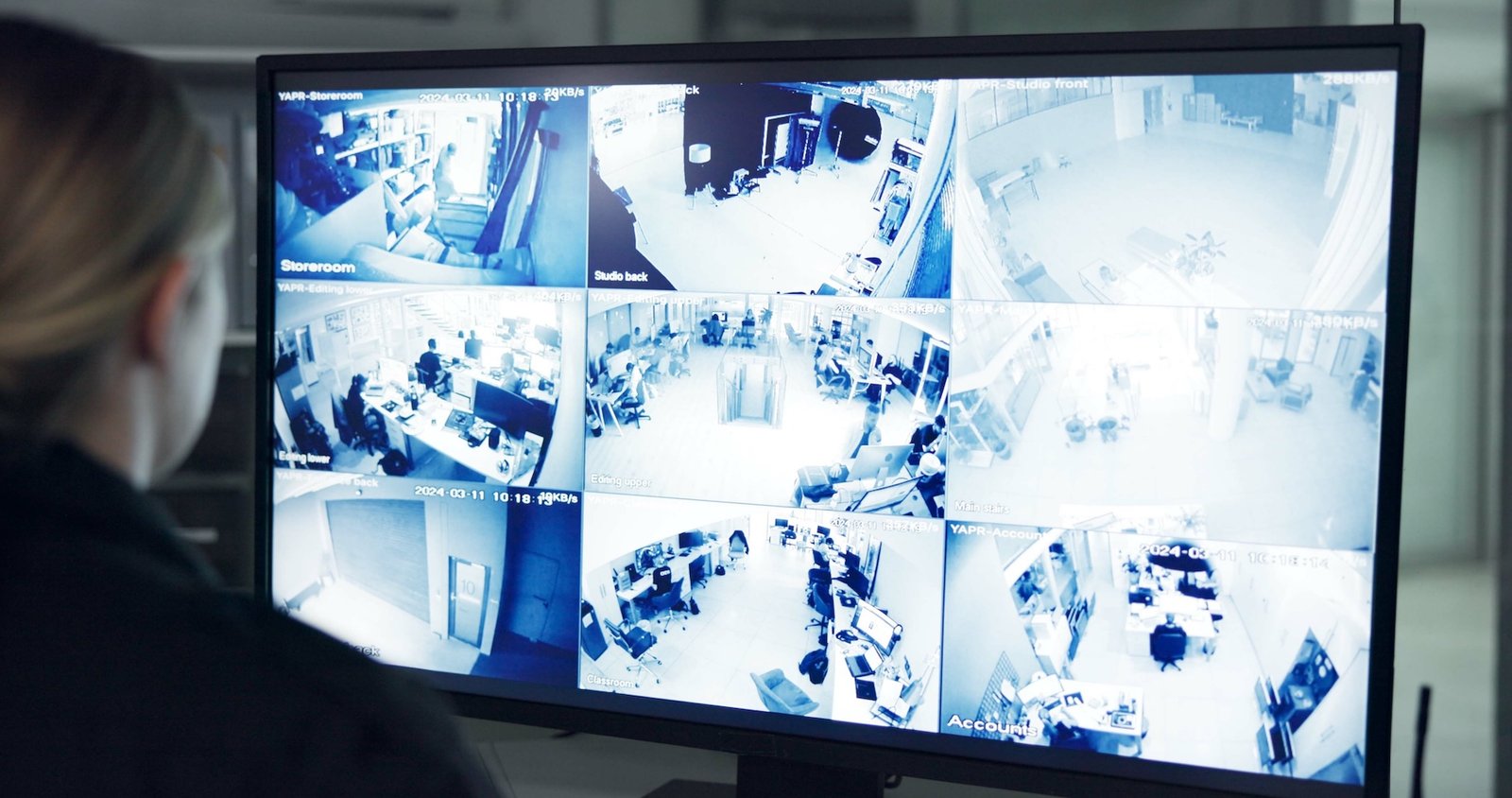CCTV screen, CCTV monitors, and surveillance monitors play a key role in video display and CCTV screen selection, ensuring optimal surveillance and security.
CCTV screens and CCTV monitors (surveillance monitors) are essential components of modern surveillance systems, responsible for displaying live and recorded footage from cameras. These video display enable security personnel to monitor and analyze events in real time, ensuring rapid responses to potential threats. Selecting the right CCTV screen (CCTV screen selection) is critical to maintaining high-quality CCTV recording and effective CCTV screen selection for reliable security operations.
This guide provides a detailed exploration of CCTV monitors and surveillance monitors, covering their types, technical features, and applications. The article also compares different display options, highlights practical factors for choosing the right screen, and provides actionable insights to ensure optimal performance in CCTV systems.
What Are CCTV Screens and Monitors?
A CCTV screen is a display device used to show live or recorded video from surveillance cameras. These screens are essential for visualizing footage captured by CCTV systems, offering clear video display for monitoring activities in various environments.
CCTV monitors, on the other hand, are specialized displays designed specifically for surveillance systems. They feature enhanced durability, color accuracy, and compatibility with CCTV recording equipment. Unlike standard consumer-grade displays, surveillance monitors are optimized for 24/7 operation, making them ideal for continuous monitoring in security control rooms and other critical applications.
Key Factors to Consider When CCTV Screen Selection
Resolution
Choose a screen with a resolution that matches or exceeds your camera’s resolution (e.g., 1080p, 4K). Higher resolution ensures sharper details, allowing operators to analyze footage more effectively.
Screen Size
Screen size depends on the viewing distance and the number of video feeds displayed. Large screens are ideal for control rooms, while smaller screens work well for individual workstations.
Aspect Ratio
The aspect ratio must align with your camera’s format (16:9 for widescreen or 4:3 for traditional cameras) to avoid image distortion and maintain proper scaling.
Refresh Rate
A refresh rate of 60Hz or higher is recommended for smooth video playback, especially when monitoring fast-moving objects.
Viewing Angle
Wide viewing angles ensure consistent image quality when viewed from different positions, which is crucial in multi-operator environments.
Connectivity
Ensure the screen supports standard inputs like HDMI, VGA, DVI, or DisplayPort for seamless integration with DVRs, NVRs, and cameras.
Durability and Longevity
Select screens designed for 24/7 operation with robust construction, heat dissipation, and features to withstand extended use.
Differences Between Monitors and Displays for CCTV

| Feature | Surveillance Monitors | Standard Displays |
|---|---|---|
| Durability | Built for 24/7 operation | Limited durability for continuous use |
| Image Clarity | Enhanced for security applications | General-purpose calibration |
| Input Support | Multiple CCTV formats supported | Limited to consumer inputs |
| Viewing Angle | Wide angles for multi-operator setups | Narrower viewing angles |
| Cost | Higher due to specialized features | More affordable for general use |
Types of Monitors and Displays for CCTV
LED Monitors
Energy-efficient, slim, and capable of sharp images with vibrant colors. They are suitable for control rooms and long-term surveillance operations.
LCD Monitors
Affordable and widely available, making them a popular choice for small-scale CCTV systems.
4K Monitors
Ideal for high-resolution CCTV recording systems, enabling detailed image analysis.
Touchscreen Displays
Used in interactive surveillance systems, allowing operators to navigate feeds and controls easily.
Video Walls
Used in large-scale monitoring operations to display multiple feeds simultaneously for centralized control.
Advantages of Using Surveillance Monitors
- Optimized for 24/7 Use: Built for continuous operation without overheating or degrading performance.
- Enhanced Color Accuracy: Delivers realistic colors and contrast for accurate video analysis.
- Compatibility: Designed to support CCTV systems and professional video display formats.
- Wide Viewing Angles: Ensures consistent quality for multiple operators in control rooms.
- Extended Lifespan: Lasts longer than consumer-grade displays, reducing replacement frequency.
Applications of CCTV Screens and Monitors
Control Rooms
Used in security centers to monitor multiple feeds and coordinate responses efficiently.
Retail Security
Monitor entrances, exits, and sales floors in retail environments to prevent theft and enhance safety.
Residential Surveillance
Used in home security setups to monitor indoor and outdoor spaces.
Industrial Facilities
Monitor production lines, warehouses, and equipment to ensure operational safety.
Public Safety
Used in city-wide surveillance systems to monitor traffic, public spaces, and critical infrastructure.
Local vs. Remote Monitors
| Feature | Local Monitors | Remote Monitors |
|---|---|---|
| Connection Type | Direct connection to DVR/NVR or cameras | Internet-based connection |
| Latency | Minimal latency | May experience network delays |
| Reliability | Independent of internet connectivity | Depends on stable internet |
| Best Use Cases | Control rooms, secure facilities | Multi-location monitoring |
How to Make the Right CCTV Screen Selection
- Determine Needs: Assess screen size, resolution, and durability requirements based on the setup.
- Match Resolution: Ensure the screen’s resolution aligns with your camera system for optimal clarity.
- Consider Viewing Distance: Select the appropriate screen size based on the operator’s distance from the monitor.
- Test Viewing Angles: Verify image quality from different positions to ensure consistency in shared environments.
- Evaluate Budget: Balance cost with necessary features like durability and compatibility.
Conclusion
CCTV screens and surveillance monitors are indispensable for effective video display in CCTV systems. Selecting the right screen ensures high-quality CCTV recording, efficient monitoring, and reliable security operations. While consumer-grade displays may suffice in certain situations, CCTV monitors offer superior durability, color accuracy, and compatibility for continuous surveillance. Carefully evaluating your setup’s requirements will help you make an informed decision, ensuring optimal performance and long-term reliability.
